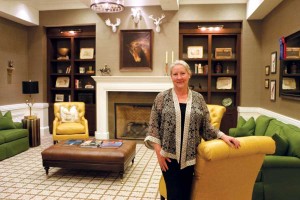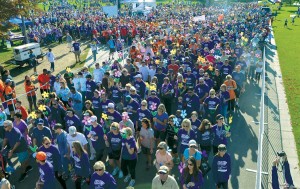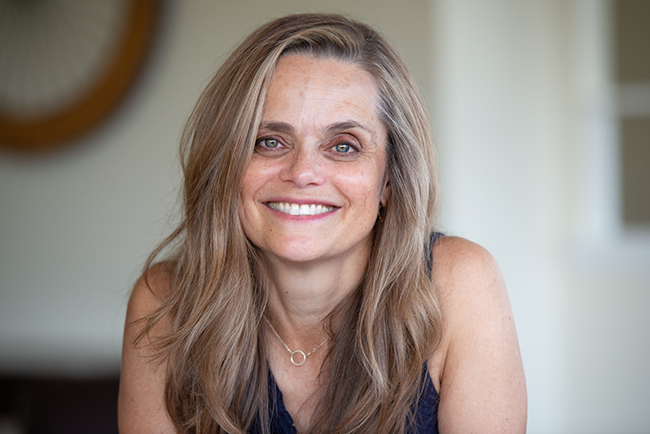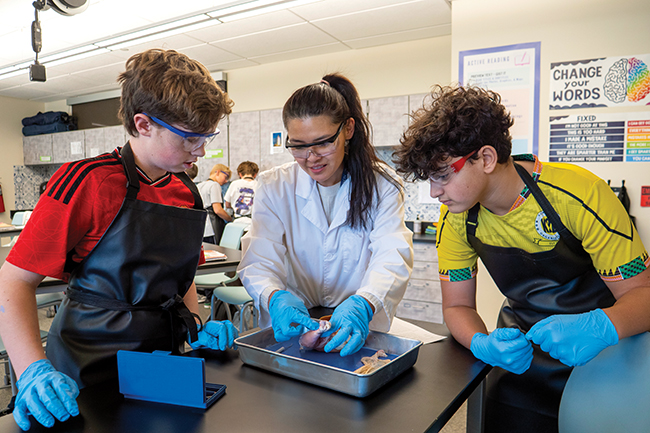Alzheimer’s: ‘We’re All at Risk’
26 Jun 2015
Alzheimer’s already affects some 65,000 patients and 234,000 caregivers in Colorado, with the numbers rising sharply.
By Shannon Burgert Baby boomers are starting to become seniors, and thanks to modern medicine, people are living longer. But with increasing age comes an increased risk for Alzheimer’s, a disease which the medical field has yet to successfully tackle. Currently, Alzheimer’s is the sixth-leading cause of death in the United States. Its prevalence rises from 17 percent in 65-year-olds to 50 percent in 85-year-olds, but the disease is not a natural part of aging. Younger, or early-onset, Alzheimer’s can emerge in people even in their 30s. [quote]If we don’t solve the problem medically, we’re all going to go broke, both emotionally and financially." —Dr. Huntington Potter, University of Colorado School of Medicine[/quote] In Alzheimer’s, certain proteins build up in the brain, making it hard for brain cells to communicate with one another. The hippocampus, the brain’s center for learning and memory, is often the first affected, but as the disease progresses people often cannot perform even basic care for themselves. People with Alzheimer’s live an average of eight years after their symptoms become noticeable to others, but changes in the brain can occur as early as 20 years before signs appear. While the world narrows for a person who has the disease, the time and money required to support that person escalate. In 2014, Alzheimer’s caregivers numbered 234,000 in Colorado, and the value of unpaid care alone exceeded $3.2 billion.
Colorado School of Medicine. He stresses the importance of diagnosing Alzheimer’s early, and believes its
onset can be delayed through mental, social and, above all, physical activity.
Supporting Boulder’s Silver Tsunami
By 2025, the number of people in Colorado alone who have Alzheimer’s disease is projected to increase from 65,000 to 92,000, and Boulder County is aging faster than the rest of the state. By 2030, the 60-plus population is projected to reach 26.7 percent of the county’s total population—almost triple what it was in 2000. In essence, Boulder is a retirement mecca. Not only is the county both physically and culturally active, but it also takes the attitude that seniors are a valuable community resource as volunteers, mentors and board members. Boulder County also leads the way in how to look at aging differently, Schafer says. “Aging Services works with people on how they want to age,” and the county offers unprecedented services for seniors, such as the Long-Term Care Ombudsman Program and Project Visibility, which supports lesbian, gay, bisexual and transgender elders. Schafer says that while no community is adequately equipped with resources, from medical care to transportation, Boulder is more prepared than most to support its seniors. Local agencies such as the Area Agency on Aging and the sheriff’s office are partnering with the Alzheimer’s Association to make the area more “dementia capable.” Training for law enforcement and first responders, for instance, includes specific search and communication techniques. “It helps them understand how people with Alzheimer’s and dementia view the world,” says Schafer. The association also partners with the Boulder Museum of Contemporary Art and runs a music program for people with early-stage Alzheimer’s to help them stay engaged in the community.The Medical Front
We can’t yet prevent or reverse Alzheimer’s, but Potter is confident that we’re on the way. “It’s very disappointing that it’s taken so long, because we know so much about its pathogenic pathway,” he says. Alzheimer’s has been reversed in animal studies, but so far that success hasn’t transferred to humans. Current research includes a look at caffeine as possibly fending off the disease, as well as an examination of people who suffer from rheumatoid arthritis, who generally don’t show signs of dementia. Another line of study focuses on Down syndrome, says Potter, who also serves as director of the Alzheimer’s Linda Crnic Institute for Down Syndrome. Because of their chromosomal makeup, all people with Down syndrome show Alzheimer’s pathology in the brain by their 30s or 40s. But even though their brains may be riddled with the signature pathology—deposits of protein fragments called amyloids, and the development of twisted fibers in brain cells, called tangles—30 to 40 percent don’t yet have dementia. “We don’t yet know why people with amyloid deposits and tangles can sometimes appear to be protected from the cognitive effects,” Potter says.What We Can Do

Shannon Burgert, Ph.D., teaches fifth grade at Fireside Elementary School in Louisville. An Ironman athlete, she writes often for Boulder Magazine about health and science.













